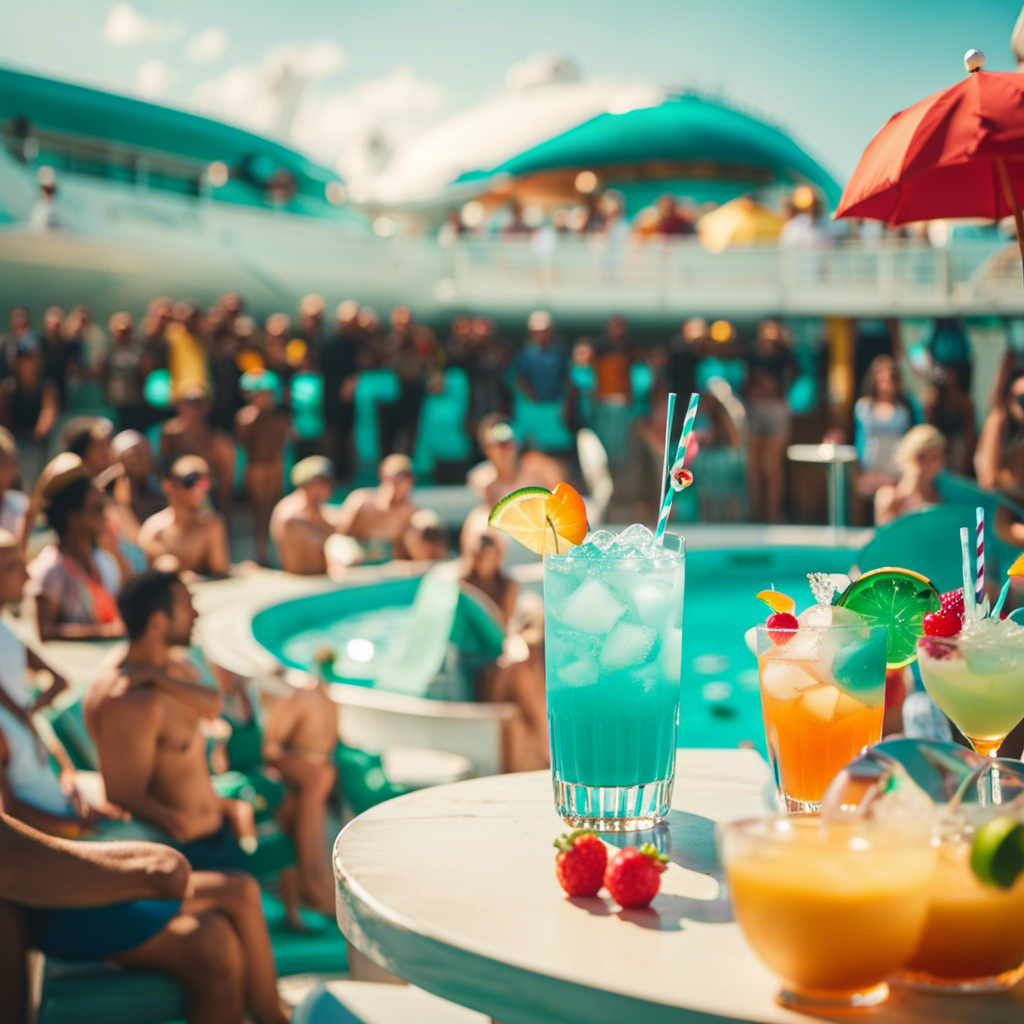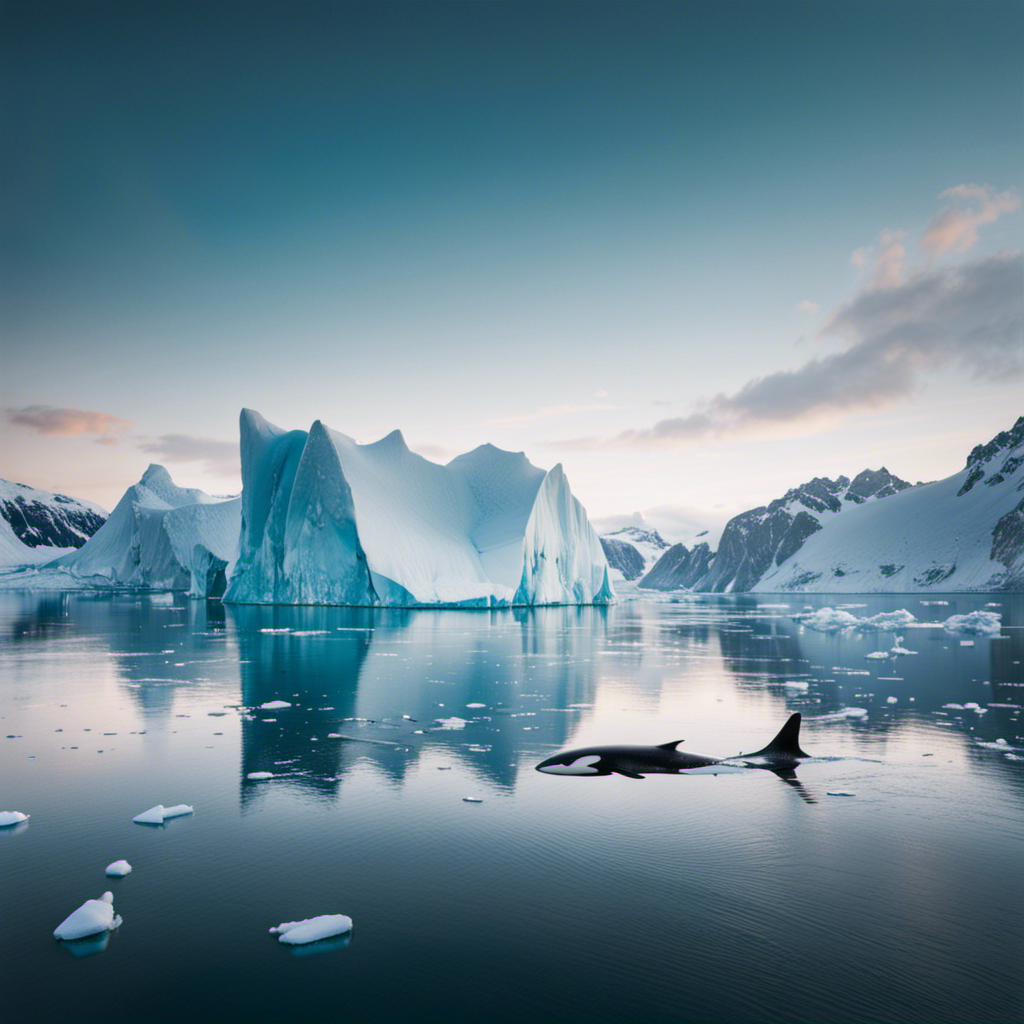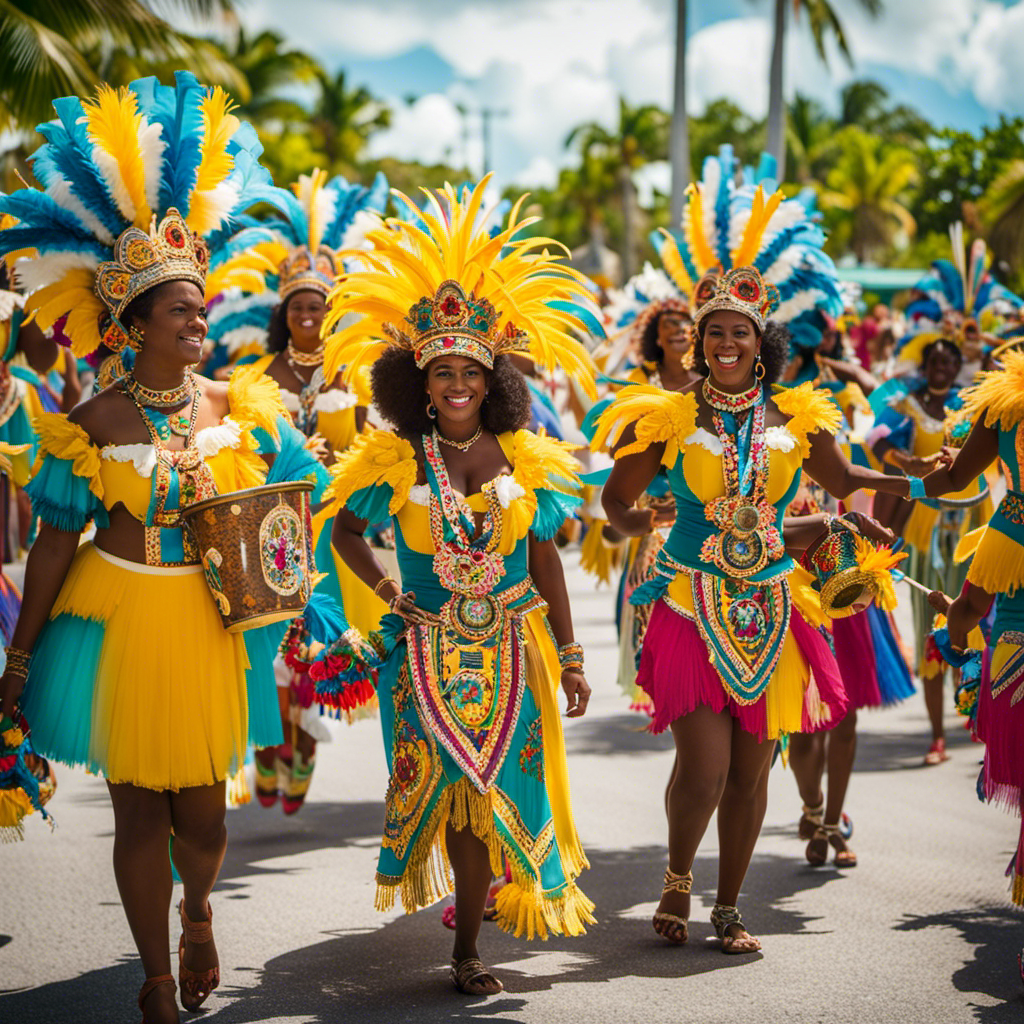The allure of adventure has consistently drawn me in, and what better way to embark on such an adventure than by setting sail on a cruise ship?
On my recent journey, I decided to dive into the ultimate cruise ship drink adventure. With a plethora of bars and drink options to choose from, I set out to find the most expensive and indulgent drink on board.
Little did I know, I would stumble upon a hidden gem at the RedFrog Pub. Join me as I recount my exhilarating experience of ordering, savoring, and relishing the largest fish bowl drink I’ve ever encountered.
Key Takeaways
- Drinking is a popular activity on cruise ships, with bars offering a wide range of options.
- The most expensive drink on the cruise ship was found at RedFrog Pub, costing $34.95 with a souvenir glass.
- Taking advantage of the happy hour deal at RedFrog Pub can save about $4 on the fish bowl drink.
- The fish bowl drink is large, sweet, and initially has a strong pineapple flavor, but becomes more enjoyable as it is consumed.
Exploring the Variety of Cruise Ship Drinks
I love exploring the variety of cruise ship drinks, from simple beers to high-end cocktails. One of the highlights of my cruise vacations is trying local specialty drinks at each port of call. It’s a great way to immerse myself in the culture and flavors of the destinations I visit.
But it’s not just about the local drinks. On the ship, there are also so many options to explore, like the wine and champagne selections. I enjoy indulging in a glass of fine wine or sipping on a glass of bubbly while watching the sunset from the deck. It’s all part of the adventure and adds an extra layer of luxury to my cruise experience.
Uncovering the Most Expensive Drink on Board
During my recent cruise, I discovered the most expensive drink on board at the RedFrog Pub. It was a hidden gem among the plethora of bars on the ship. The art of mixology was truly showcased in this establishment, and I was eager to try their renowned drink.
Here are four aspects that made this experience unforgettable:
-
Exquisite Presentation: The drink was served in a fish bowl, a true spectacle that caught everyone’s attention.
-
Unique Ingredients: The mixologist had carefully crafted a blend of premium spirits and tropical flavors, creating a drink that was both refreshing and indulgent.
-
Pricey Souvenir: The cost of the fish bowl included a souvenir glass, a memento of this extravagant experience.
-
Unforgettable Taste: With each sip, I could taste the complexity of flavors, from the sweetness of pineapple to the subtle hints of rum.
Discovering hidden gems in cruise ship bars is an adventure in itself, and the art of mixology on a cruise ship is truly an art form worth exploring.
Savoring Happy Hour Deals on the Ship
The happy hour at RedFrog Pub offers a 50% discount on drinks, including the fish bowl. It’s the perfect opportunity to maximize your drink options while saving money during your cruise.
My tip for saving money on drinks while cruising is to take advantage of happy hour deals like this one. The fish bowl at RedFrog Pub is a must-try, and getting it at half price during happy hour is a steal.
The drink is massive and filled to the brim with a choice of delicious rum-based cocktails. The taste is initially sweet, with a strong pineapple flavor, but it becomes even more enjoyable as you sip on it. Plus, the experience is elevated by the discovery of edible straws.
So make sure to mark your calendar and head to RedFrog Pub during happy hour to savor this ultimate cruise ship drink adventure.
Ordering and Enjoying the Famous Fish Bowl Drink
Ordering and enjoying the famous fish bowl at RedFrog Pub was an exciting experience.
The ordering process was simple and efficient, with the bartender taking my order after a short wait.
The fish bowl drink offers a variety of recommended cocktails, mostly rum-based, which made it difficult to choose just one. I finally settled on the tropical punch, a refreshing blend of fruity flavors.
As I lifted the fish bowl, it felt like carrying a mini aquarium. The drink was massive, filled to the brim with a vibrant pink hue.
The first sip was a burst of sweetness, with a strong pineapple flavor that transported me to a tropical paradise. Despite its size, the drink became more enjoyable as I savored each sip.
The experience was enhanced by the discovery of edible straws, adding a playful twist to the indulgence.
First Impressions of the Massive Cruise Ship Drink
Carrying the fish bowl drink, I could feel the weight of a mini aquarium in my hands. The size and presentation of this massive drink was truly impressive. It was like holding a piece of the ocean right in front of me.
As I took my first sip, the initial taste experience was overwhelmingly sweet, with a burst of pineapple flavor. The drink filled every corner of my mouth, and I could feel the coolness of the ice against my lips. Despite the sweetness, the drink became more enjoyable with each sip.
The size of the fish bowl allowed me to savor the flavors and take my time. To add to the experience, I discovered edible straws, making it even more fun and unique. This drink was truly an adventure for the senses.
Adding a Unique Twist With Edible Straws
Adding a unique twist to my experience, I was delighted to discover the edible straws that accompanied the fish bowl drink.
As I reached for my first sip, I couldn’t help but notice the colorful, biodegradable straws made from natural ingredients.
These creative alternatives to traditional straws not only added a fun and whimsical touch to the drink, but they also helped reduce the environmental impact of single-use straws.
With growing concerns about plastic pollution, it was refreshing to see a cruise ship embracing sustainable practices.
The edible straws provided a guilt-free way to enjoy my drink without contributing to the waste stream.
As I sipped on my fish bowl drink, I couldn’t help but appreciate the thoughtfulness and innovation behind these eco-friendly straws.
Frequently Asked Questions
Are There Any Non-Alcoholic Drink Options Available on the Cruise Ship?
Yes, there are non-alcoholic drink options available on the cruise ship. They have a variety of mocktails to choose from, including healthy drink options. These refreshing beverages are perfect for those who prefer non-alcoholic alternatives.
Can You Bring Your Own Alcohol on Board the Cruise Ship?
Yes, you can bring your own alcohol on board the cruise ship. However, there may be restrictions and fees. As for the best drinks to try on a cruise ship, there are a variety of options ranging from beer to cocktails.
Are There Any Age Restrictions for Purchasing and Consuming Alcoholic Drinks on the Ship?
There are age restrictions for purchasing and consuming alcoholic drinks on cruise ships. Different cruise lines have different legal drinking ages. Parental consent may be required for underage drinking.
Are There Any Specialty Drinks That Are Unique to the Cruise Ship?
Cruise ship drink menus offer a variety of unique cocktail creations. From fruity concoctions to specialty martinis, there’s something for everyone. I’ve had the pleasure of trying some of these one-of-a-kind drinks on my recent cruise.
Are There Any Drink Packages or All-Inclusive Options Available for Guests?
There are drink packages and all-inclusive options available on cruise ships. They offer benefits like unlimited drinks and cost savings compared to buying individual drinks. It’s a great way to enjoy your favorite beverages without breaking the bank.
Claire, a creative soul with an unquenchable thirst for storytelling, is an integral part of the Voyager Info team. As a dedicated writer, she weaves captivating narratives that transport readers to enchanting cruise destinations and beyond.
Claire’s love affair with writing began at an early age when she discovered the magic of words and their ability to craft worlds and emotions. Her innate curiosity led her to explore various literary genres, but it was travel writing that truly captured her heart. Drawing inspiration from her own globetrotting adventures and encounters with diverse cultures, Claire embarked on a journey to become a travel writer par excellence.











